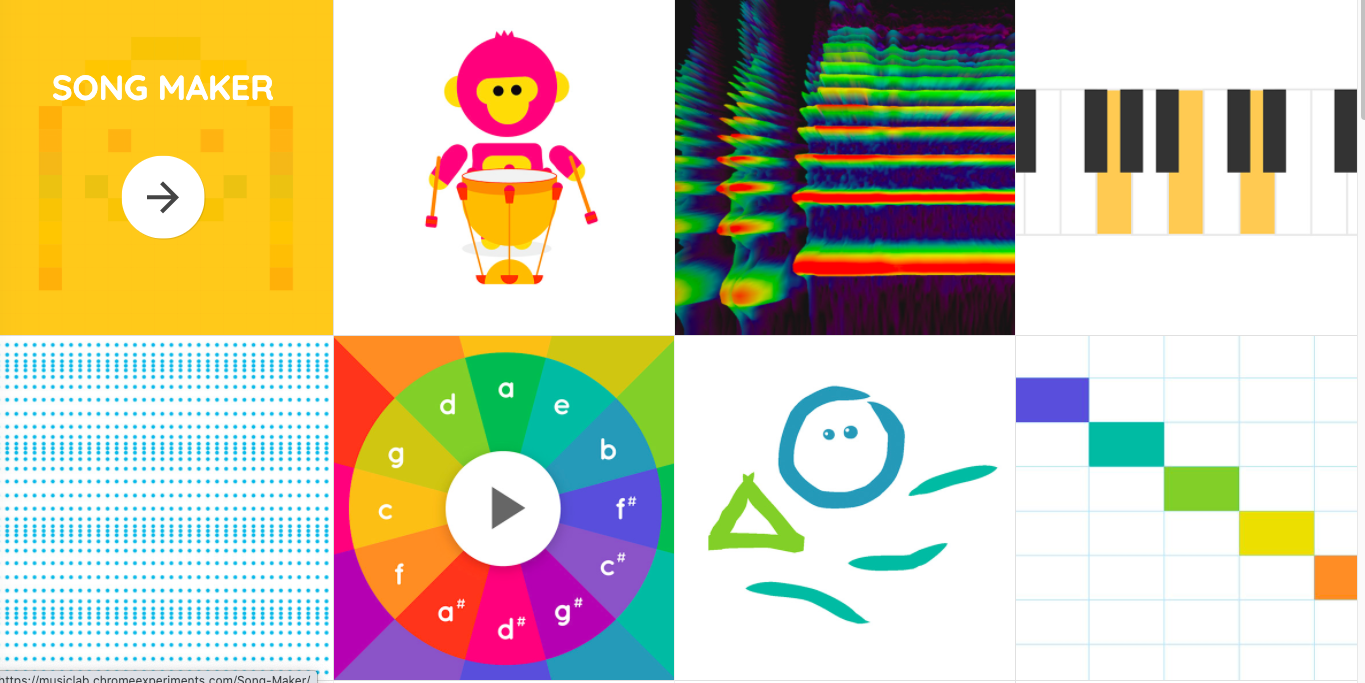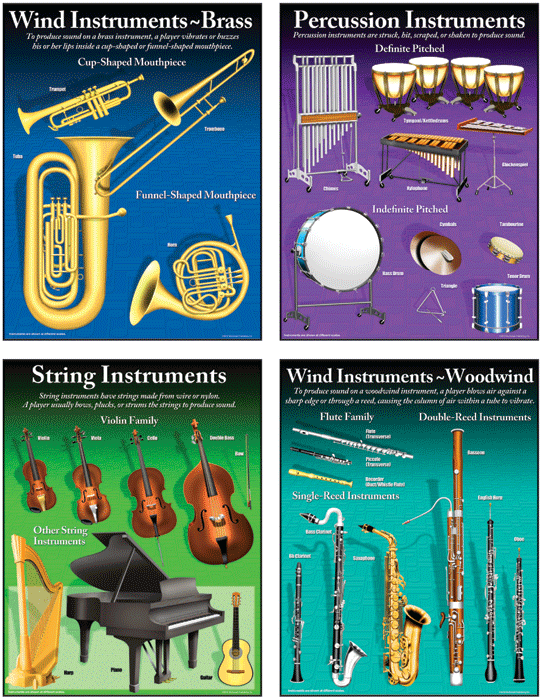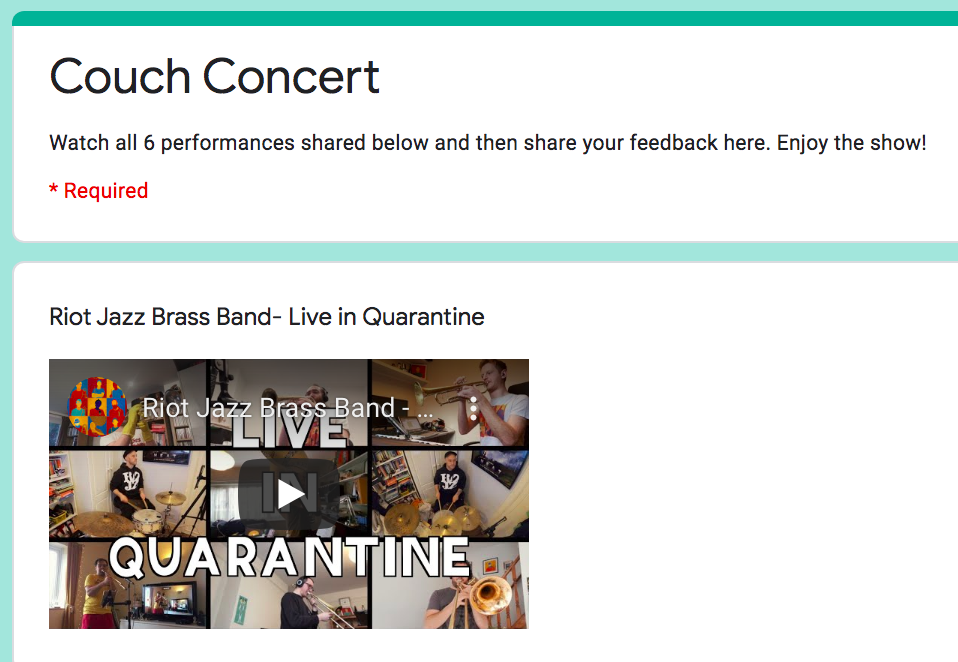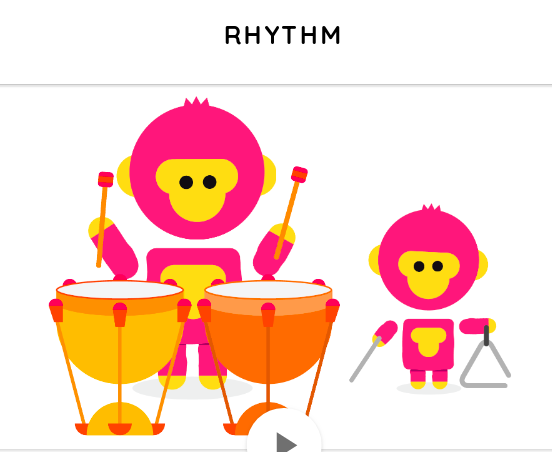Week 6/15-6/19
Dear Fifth Graders,
Congratulations! You've made it through 13 weeks of distance learning! I know it hasn't been easy but I'm proud of you. Although our sticker chart is still at school, I know it would definitely be filled up by now. In fact, you've earned more than one super fun music reward! I hope you enjoy these games and activities.
Love, Ms. Sheridan
LISTEN: Here are two awesome and inspiring videos I thought you might like. ;)
Bad Guy on Boomwhackers: The Lorax: Dr. Suess raps with Dr. Dre beat
Congratulations! You've made it through 13 weeks of distance learning! I know it hasn't been easy but I'm proud of you. Although our sticker chart is still at school, I know it would definitely be filled up by now. In fact, you've earned more than one super fun music reward! I hope you enjoy these games and activities.
Love, Ms. Sheridan
LISTEN: Here are two awesome and inspiring videos I thought you might like. ;)
Bad Guy on Boomwhackers: The Lorax: Dr. Suess raps with Dr. Dre beat
|
|
|
PLAY:
Here are two sites that I thought you would enjoy exploring. Have fun!
Here are two sites that I thought you would enjoy exploring. Have fun!
Week 12: 6/8-6/12
|
READ:
I am sharing the story of "Lift Every Voice and Sing' by Kelly Starling Lyons this week. You may remember this book from earlier in the year when Principal Miller shared it with us at our assembly for MLK Jr. Sing along with me when the song pops up in the book! LISTEN & SING: Songs that bring us together There are so many things going on in the world around us right now. Many people are feeling worried, sad, angry or confused. These are all important feelings. Sometimes, these emotions can leave us feeling alone. One thing I know that can always help bring people together is music. Humans sing when they are happy. But, we also sing when we’re sad. Making music has a magical way of helping us share our feelings and find the words we need to express ourselves. It can make us feel united and strong. It has the power to lift us up and make us belong. You and your family may be expressing your feelings at home by making signs of gratitude and cheering on our essential workers helping to fight the pandemic. You may be protesting, marching or attending a vigil to show that you know Black Lives Matter. All of these actions are important tools for changing and strengthening our community. |
Playlist of songs that bring us together:
|
Throughout history, music has been the glue to bind communities together when they are unraveling. Each year at Pierce, we sing to celebrate the life of Martin Luther King Jr. to remind us of our constant fight for civil rights in this country. What we sing, unites us and makes us stronger. I have shared these songs and more in a playlist below. I encourage you to bring these songs into your homes. Listen and SING as a family and lift each other up.
|
|
|
|
|
LEARN:
This week we will finish up our unit on the Orchestra by learning about the Percussion family! Percussion instruments are played by hitting, shaking or being scraped. Percussion plays a huge role in the music that John Williams composed. Whether you’re listening to Harry Potter, Star Wars, Indiana Jones, or any of his other powerful movie scores, the percussion family always has a big job. Watch for percussion instruments like the timpani, snare drum and bass drum in this performance by the Boston Symphony Orchestra conducted by John Williams at Tanglewood. Use this worksheet to share your observations as you listen. Send it to me at: [email protected]
Your browser does not support viewing this document. Click here to download the document.
|
|
Week 11: 6/1-6/5
|
May The Force Be With You!
We are continuing with our learning about composer John Williams using the music he has written for Star Wars! This week, we are focusing on the brass section of the orchestra. The Star Wars soundtrack is known to have a great big brass section to emphasize the vastness of space. Listen to the "Imperial March" from Star Wars. This theme is very famous and known as the “Darth Vader Theme Song”. The song is played mostly when Darth Vader enters the picture in the movie. |
|
LISTENING:
Last week you learned that a suite is a collection of pieces of music that are related. This Star Wars Suite has several more songs from the movies. How many do you know? As you listen, fill out this listening worksheet and send your work to me through email: [email protected]
Last week you learned that a suite is a collection of pieces of music that are related. This Star Wars Suite has several more songs from the movies. How many do you know? As you listen, fill out this listening worksheet and send your work to me through email: [email protected]
|
Your browser does not support viewing this document. Click here to download the document.
|
|
READ: Little Melba And Her Big Trombone
"Melba Doretta Liston loved the sounds of music from as far back as she could remember. As a child, she daydreamed about beats and lyrics, and hummed along with the music from her family's Majestic radio. Overcoming obstacles of race and gender, Melba went on to become a famed trombone player and wrote and played gorgeous songs for all the jazz greats of the twentieth century." Listen to me read the story about this amazing Brass player and then hear the real Melba Liston play below! (From Google Books Intro)
"Melba Doretta Liston loved the sounds of music from as far back as she could remember. As a child, she daydreamed about beats and lyrics, and hummed along with the music from her family's Majestic radio. Overcoming obstacles of race and gender, Melba went on to become a famed trombone player and wrote and played gorgeous songs for all the jazz greats of the twentieth century." Listen to me read the story about this amazing Brass player and then hear the real Melba Liston play below! (From Google Books Intro)
|
|
|
More AWESOME Listening:
Check out all of these amazing versions of the music from Star Wars that different musicians have made! You will use a google form to share your thinking about the different videos. All of these videos are available to watch in the google form as well as below on the website. I can't wait to read your answers and see what you think!
Click here to begin: Star Wars Listening Survey
Check out all of these amazing versions of the music from Star Wars that different musicians have made! You will use a google form to share your thinking about the different videos. All of these videos are available to watch in the google form as well as below on the website. I can't wait to read your answers and see what you think!
Click here to begin: Star Wars Listening Survey
|
|
|
|
|
|
|
Week Ten: 5/26-5/29
|
The Woodwind Family
After visiting the Cincinnati Music Hall and reviewing the families of the Orchestra with the Young Person’s Guide to the Orchestra by Benjamin Britten, you should feel like an expert on the four families in the Orchestra. This week, we are going to begin learning about a very special composer. You may not know his name, but I bet you can recognize a lot of the music he has written! John Williams is an American composer. He has written all kinds of music in his lifetime, but is most famous for the nearly 80 film scores he’s composed. This week, we’ll explore the music he created for “Harry Potter and the Sorcerer’s Stone”. He is very skilled at creating memorable themes and this one is no exception! A theme in music is the big idea, just like the theme of a book or movie. A good theme is one that gets stuck in your head or is something you find yourself humming around the house. Hedwig’s theme is first played on the celesta which is a keyboard instrument that sounds like a cross between a glockenspiel and a piano. Then, it is passed around the orchestra and played by members of each instrument family. Hedwig’s theme: The video below shares a suite from “Harry Potter and the Sorcerer’s Stone” that Williams composed. There’s a cool laser light show happening too! In music, a suite is a set of pieces that are related. Can you recognize the different parts of the movie based on the music alone?
Who Played it Better?
This video shows "Hedwig's Theme" played by a variety of musicians on a variety of instruments! Which one do you like best? See if you can figure out how to play this theme on an instrument at home. |
Listening worksheet:
Use the worksheet below to organize your thoughts as you listen to "Hedwig's Theme". Share your writing with me when you are finished! Take a picture of your worksheet and email it to me at: [email protected] |
Week Nine: 5/18-5/22
|
Last week, you listened to 3 different performances of "Bolero" by the French composer Maurice Ravel. As you were watching and learning, I hope you were thinking about all the different instruments you were hearing and seeing. We will be learning about the orchestra over the next few weeks and will begin today with a virtual field trip to a VERY cool place. We will explore the Cincinnati Music Hall in Ohio and answer some questions along the way!
Click on this link to visit Music Hall and begin your tour. Make sure you read the directions before you enter the building. You want to turn on the "info" and "scavenger hunt" features first! If you are at all confused about how to do this activity, please watch the video I made with directions posted here. (Ignore the part where I talk about 4th grade, this IS for you 5th graders!) There is an option for sending me your answers with a google form OR printing the worksheet on paper and emailing it back to me. Either way, please send me your work! I miss you! |
|
Week Eight: 5/11-5/15
|
FIELD TRIP TIME!
We will be learning about the orchestra over the next few weeks and we will begin this unit with a virtual field trip to the London Symphony Orchestra to sit in on a performance of a piece of music called Bolero by Maurice Ravel. Visit the London Symphony Orchestra while they perform Bolero and see what it feels like to sit in the Orchestra section for this performance. There are cameras positioned in each section of the orchestra, and on the conductor, and you can change camera angles to see more of what you are interested in. IT'S SO COOL! What do you notice about the way the melody is passed around the players? Next, you will see how to different groups of artists have interpreted this same enchanting piece of music from home during this time of world wide quarantine. First, the members of the L'Orchestre National de France created a virtual performance. This is the second video posted here. The feeling of their performance is very different to me, but I was really interested to see each player at home, and how they managed to edit everyone's part together. Finally, watch current and former students of the Julliard School, including dancers, actors and musicians perform their own version of Bolero. They truly make the piece their own as they add their own interpretation and musical styling. Which performance was your favorite? What made you choose it? What do you think about the fact that some groups perform the piece as the composer intended it to be played, and others make it their own? Send me your thoughts and observations at:[email protected] |
PERFORMANCE #1
|
|
PERFORMANCE #2
|
PERFORMANCE #3
|
Week Seven: 5/4-5/8
|
MOVE: Home Run
Follow along with the video to see if you can hit all the beats with the movements! It can be a workout and I have to say I was out of breath a little towards the end! If I get 5+ videos of 5th graders showing me they can do this, I will post mine! SING: You’ve Got A Friend I know that being home and missing school is not easy. At Pierce, we’ve been super proud of how well everyone has been getting through it. Let’s sing a new song together to celebrate this. I’ve attached a great version of a musical cast singing this song and also the words to the song. Would love to see some clips of you all singing! LEARN: Music of Germany Read about the music of Germany this week. The first page summarizes the foundations of traditional German music and instruments. The video of the zither instrument is below. Fill out the “What I’ve Learned” page and when you are done try to do your own research!
Your browser does not support viewing this document. Click here to download the document.
|
Your browser does not support viewing this document. Click here to download the document.
|
Week Six: 4/27-5/1

CREATE:
Last week, you learned the Cup Song. (If you haven't yet learned it, scroll down to Week #5 and check it out!) This week, you get to try making up your own cup song! I made my own routine to a song from the soundtrack to the new Trolls movie. You can use any music you like for your original routine. OR you can teach the song you already learned last week to your family members and try it together like this video. Watch this video of a school of students performing the Cup Song in France! It looks like so much fun! EXPLORE: We are headed back to the Chrome Music Lab this week! Watch these two videos to learn (or review!) your options using Songmaker. Your assignment is to take a song you love and work to recreate it in Songmaker. Share your finished product with me at: [email protected] MOVE: This song activity gives you a chance to work on your coordination and musical timing while having fun! The “Deteggtive” will lead you through the song showing you which beat is happening in the music. The picture here tells you what each egg means.
Follow along and try one color at a time. See if you can keep up and make every movement happen with the beat of the music. Then try to do two colors, and finally, try all three! If Level 2 seems pretty easy for you, challenge yourself with Level 3 and Level 4. Level 3 and 4 add a new egg so you can choose what to do when that egg appears! Maybe a star jump or a jumping jack? Have fun with it!! See if you can do this with friends on Face time or Zoom all together. |
|
Week Five: 4/21-4/24
|
LISTEN & REFLECT:
I'm giving you one more week to complete our “Couch Concert” This is a fun and easy assignment that every student should complete! Thank you to those students who already submitted their answers. I enjoyed reading about which performances you liked and disliked. So far, the "Squashmouth" video is in the lead for most favorite performance. LISTEN: Play a fun game of Name that Tune! Watch the video posted here and try to guess which Disney song is playing. I tried it and didn’t get all the songs! But it was super fun :) EXPLORE: You may remember using the Chrome Music Lab for a music choice reward a few months ago. This week, spend some time playing with the rhythm section that lets you experiment with beat, meter, and different instruments. PLAY: Learn the Cup Song from the movie “Pitch Perfect”. All you need is a plastic cup! Watch this tutorial to get started. Practice slowly at first and then try speeding up gradually until you can match the music in the video. Please send me a video of you performing the cup song to my email! [email protected] |
|
Week Four: 4/13-4/17
LISTEN & REFLECT:
During this time of social distance, musicians all over the world are still making music at home and finding creative ways of connecting with their band mates, their fellow Chorus members, Orchestra friends and even their back up dancers! They are also reaching audiences everywhere and providing entertainment and good feelings across the world.
Watch this “Couch Concert” of different performances and then use the Google Form to share your thoughts and reflections with me!
During this time of social distance, musicians all over the world are still making music at home and finding creative ways of connecting with their band mates, their fellow Chorus members, Orchestra friends and even their back up dancers! They are also reaching audiences everywhere and providing entertainment and good feelings across the world.
Watch this “Couch Concert” of different performances and then use the Google Form to share your thoughts and reflections with me!
|
|
|
|
|
|
Week Three: 4/6-4/10

PRACTICE: 5 Basic Beats to Practice
Keep practicing these 5 beats! They are a good warm up before you play. Practice them to any song you like! PLAY: Imagine Dragons “Radioactive”
GET INSPIRED: Bucket Drumming Performances Notice how they use different types of buckets to create different sounds and how expressive they get while making music with simple buckets! |
|
|
MOVE: Make a Tiktok!
Watch the tutorial that Ms. Han made to help you learn how to do the Funky Town Tik Tok dance. You can watch my version posted here too. Try it out and share your finished Tik Tok video with me! When you are done, add your video to this folder so we can all see each others videos. ***You do not need the Tik Tok app to do this. Just use the music posted below these directions and use a phone, i-pad or computer to video yourself (and your family!) dancing. |
|
Week Two: 3/30-4/3
|
PLAY: Last week, I asked you to find a drum and some sticks that could work for our drumming at home. We are going to be using these for the next few weeks so make sure you have something that will work well and sound good! Watch this video for some tips for making your bucket sound better! Your parents and siblings will thank you. ;) PRACTICE: 5 Basic Beats to Practice This video takes you through some basic rhythm patterns that you should be able to read. It shows the patterns to you on your sticks first. Practice a few times that way, and then practice few times on your drum. Then, put on some of your favorite songs and see if you can play the same rhythm patterns along with the music! CHALLENGE: Rolling in the Deep Here’s a fun song to practice some more challenging rhythms and patterns. If it feels hard at first, that’s good! You want to make your brain stronger by trying something that you have to really work for. JUST FOR FUN: Want to know how to flip your sticks like a real rocker?! Watch here and practice.
|
|
Week One: 3/23-3/27
|
CREATE: Make your own bucket drum
1. We’ll be doing a lot of drumming in the next few weeks so it’s worth the time to find the right thing to play. Buckets, large plastic containers, or tupperware containers can make a great drums. Look around your house, find something to try and then see how many sounds you can make with it. 2. Find some drumsticks! Wooden spoons, chopsticks, rubber spatulas or pencils can make great drumsticks. If you can’t find anything at home, head outside and look for two sticks that are the same width and length. 3. Try playing along with this video of the well known song “We Will Rock You” by Queen. LISTEN: Get Inspired Remember when we studied Beethoven and tried playing “Ode to Joy” from his Symphony No. 9? Watch this video of musicians from the Netherlands playing together from afar. |
|
Proudly powered by Weebly









